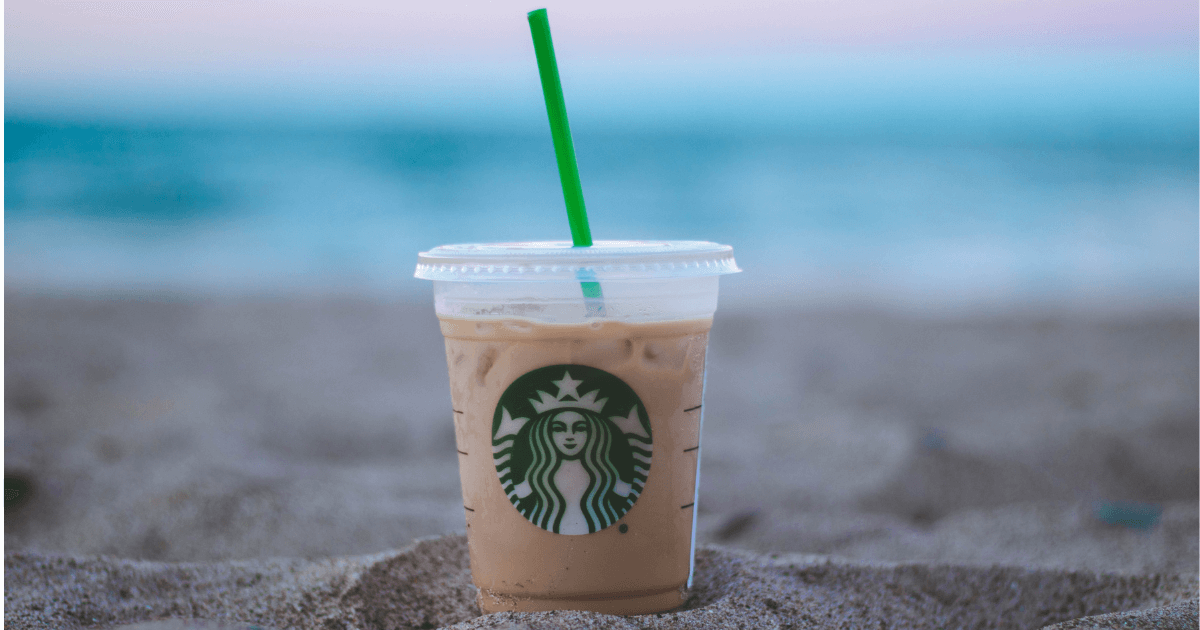In a world filled with endless visual distractions and short attention spans, where brands compete for our limited cognitive space, sound has emerged as a potent weapon in the marketer's arsenal. The captivating realm of sound branding, where a symphony of auditory cues has the power to shape our perceptions, elicit intended emotions in the listener, and cultivate unwavering loyalty.
Sound branding encompasses the strategic use of audio elements to establish and reinforce a brand's identity. It goes beyond catchy jingles and sonic logos; it delves into the depths of our subconscious, creating associations that connect us to brands on a profoundly emotional level.
Like the iconic opening sound that accompanies every Netflix original or the unmistakable closing sound that bids us farewell on TikTok, these sonic signatures have become the sonic threads weaving the fabric of modern brand experiences.
This piece seeks to answer peculiar questions about the world of sound branding and its paramount importance in the ever-evolving marketing landscape. Also to uncover the science behind the impact of sound, note some successful case studies from brands like Mastercard, McDonald's, Netflix, and TikTok, and equip you with practical insights to orchestrate your own symphony of sound in your marketing strategies.
So, get ready to immerse yourself in a world where sound reigns supreme, where every note strikes a chord within your audience, and provide answers to this lingering question: "Is sound branding really important?".

Understanding the concept of sound branding
At the core of sound branding are various elements that work in harmony to create a cohesive auditory experience. One such element is the sonic logo, a concise and memorable soundbite that serves as the audio equivalent of a visual logo. Just like the Intel jingle that was estimated to be played at least once every 5 minutes somewhere around the world or the iconic Nokia starting tone, these sonic logos are powerful tools that ensure your brand stays top of mind and these short sound snippets instantly trigger brand recognition and evoke associations with specific qualities or emotions.
That’s not all, Sound branding is not just about jingles or theme songs; it's also about creating a unique audio signature that consumers instantly associate with your brand. Picture the 'ta-dum' sound you hear when you start a Netflix show, or Apple's startup chime. These sounds are as much a part of the brand as their logos or taglines.
Sound branding should be given much more attention by brands and businesses for several reasons. For one, it facilitates rapid communication as the human mind processes sound at an incredible speed. Even a single note can evoke specific emotions. Sound, being emotional by nature, elicits emotion through your brand, creating an instant connection with your target market. Moreover, when something is associated with a feeling, it becomes deeply embedded into the memory.
The role of sound branding in building brand identity
Sound branding takes advantage of sound effects, ambience, and voice to create a consistent and immersive sonic world that aligns with the brand's values and messaging. By tapping into the power of sound, marketers can transcend language barriers and connect with audiences on a deeper, subconscious level.
One intriguing study, which examined the reactions of 1,000 Australian consumers to various audio clips, shed light on the profound impact different types of music can have on our emotional responses. It revealed that the specific melodies, chords, or key changes within songs can elicit strong but distinctly different emotional reactions among individuals.
For instance, the study found that when strings played short and sharp notes in a major key, a remarkable 87% of respondents reported feeling a sense of happiness and excitement. On the other hand, a shift from major to minor keys triggered a sense of sadness or melancholy in 83% of participants. Additionally, a striking 90% of respondents associated acoustic guitar sounds with attributes like care, calmness, and sophistication.
These findings emphasize the importance for advertisers and marketers to have a clear understanding of the emotions they wish to evoke in their viewers. It underscores the significance of selecting the appropriate type of sound that aligns with the desired emotional response. By tapping into the power of specific melodies, chords, and key changes, marketers can effectively shape the emotional landscape of their campaigns and create a deeper connection with their target audience.
Research has also shown that sound branding has a significant impact on brand perception and recall. Studies indicate that incorporating sound elements into advertisements increases attention, engagement, and overall effectiveness. By leveraging the unique qualities of sound, marketers can create memorable and distinct brand experiences that stand out amidst the noise of the market.
Sound branding bestows a brand with a unique audio identity, which can over time evolve into a valuable trademark. This form of branding not only triggers memory and associations but also signals quality and trustworthiness.
The business impact of sound branding
Sound branding isn't just about brand identity; it also has a tangible business impact. A study by Leicester University found that brands with music that fit their brand identity were 96% more likely to be recalled than those with non-fitting music. TikTok's closing sound, the catchy tune that plays at the end of every video, is a perfect example of this. It's not just a sound; it's a hook that keeps users scrolling for more. Mastercard’s sound of Trust and Inclusion project which resulted in 63% more digital transactions, 2X more transaction confidence, 78% boost in trust from 98+ million sonic touchpoints as reported by amp is proof of the impact of a properly executed sonic branding.
Because of how quickly our brains process sound, the perfect sonic logo can almost enter the mind subconsciously. By associating a certain tone or jingle with your brand, you can create instant recognition with your audience even if they’re not looking at a poster or reading an advertisement.
In banking, as referenced in the article by Platform Streat on amp’s latest release about how Sonic branding affects Fintechs, sound branding will be crucial for fintech to win the next generation of users, millennials and Gen Z. While acquiring customers is important, keeping these users loyal will be even more important if they will be able to at least keep the average checking account age in the US which is currently at 17 years or extend it further. Sonic branding can be a key difference maker to dive trust and authenticity even beyond recall and memorability which can be in the form of UX sounds that contribute to brand personality and a wholesome sonic identity.
Why is sound so effective?
Sound has an amazing ability to evoke a reaction within our brains – which shouldn’t come as a surprise if a piece of music has ever given you goosebumps, or you’ve felt a gut-wrenching feeling when hearing a baby cry.
Our bodies actually react to sound quicker than any other sense, helping us to sense danger quickly back when Homo sapiens spent more time worrying about predators than brand identity.
We’re hardwired to react to sound, and we learn what certain sounds mean, both in an evolutionary and a social context. Nowadays, sound can be a helpful tool to let us know that it’s safe to cross the road, that our card transaction has been accepted, or that an error on our computer needs attention.
Getting started with sound branding
If you're convinced about the power of sound branding and want to get started, here are some steps to guide you.
Define your brand's sonic identity
Just like your visual identity, your sonic identity should reflect your brand's personality and values. Consider the emotions you want to evoke in your audience and how sound can help achieve that.
Create your sound assets
This could be a brand anthem, a jingle, a sound logo, or even the background music for your ads. Remember, consistency is key. The sound should be recognizable and consistent across all platforms and touchpoints. It is also important to avoid using stock sounds or some basic AI-generated music and rather explore creating custom-produced soundscapes. Here is a non-exhaustive list of some sound assets that you can consider creating for your brand:
- Immersive audio
- Sonic Logo
- Brand Voice
- Event Sound
- On-hold Music
- Soundtracks
Test your sound
Before you launch, test your sound on a small audience. Gather feedback and make necessary adjustments
Launch and integrate
Once you're satisfied with your sound, launch it and integrate it into your marketing strategy. Use it consistently across all platforms to build recognition.
Sonic branding can be an extremely valuable tool but it’s more important for some companies than others. If you create any of the following, you would most likely benefit from creating a strong sonic brand:
- TV and radio adverts
- Podcasts and vlogs
- Audio or video content or guides
Remember that sonic branding works best as a single ingredient in your overall branding recipe. It is also very important to think long-term, be consistent, be unique and be ready to evolve as you do to your visual identities. Make sure the sounds you choose to complement your name, colour scheme, and general ideals to strengthen the bond between your sonic and visual identities.
To get some ideas, you can do further reading on the best audio brands as collated by amp and pick some learnings from the sound of Tiktok which 73% of respondents in a recent global study conducted by Kantar shows that it helped reinforce brand awareness and affinity performing higher than average industry benchmarks. This sonic identity was also recognized by SoundOut Audio Branding Index 2023 which ranks based on rank each on appeal, recall, propensity to buy, recognition etc as one of the most recognized sonic logos this year, with TikTok garnering 70% recognition out of over 130 sonic logos from major brands across the US.
@tiktoknewsroom The TikTok sonic identity embodies the sound of our global community. 🎵 Discover how it came to life, in collaboration with MassiveMusic (a Songtradr company). 🔗 in bio 👀
♬ original sound - TikTok Newsroom

Conclusion
Sound branding is more than just a marketing gimmick. It's a powerful tool that can enhance brand identity, drive customer engagement, and fuel business growth. As the digital landscape becomes increasingly noisy, it's high time for businesses to listen to the power of sound branding. Whether you're a startup or an established brand, consider how sound branding can help you stand out and connect with your audience on a deeper level.
When creating an audio identity, it's important to think long-term, be consistent, adapt to different platforms, evolve over time, and be unique. An audio strategy should span five to ten years or more. Consistency across multiple touchpoints boosts ROI significantly.
Looking ahead, the future of audio branding holds even more promise as smart devices and ad slots on streaming services become deeply ingrained in mainstream culture. The rise of podcasts, music streaming services, and video platforms with enabled audio amplifies the reach of sonic advertisements. With the growing prevalence of smart speakers, a substantial percentage of households now interact with brands through audio platforms. Major players in the industry, such as Apple, Amazon, Microsoft, and Google, have already embraced sonic branding to create unique identities for their smart speakers.
By incorporating sound branding into your advertising efforts, both in-store and across digital platforms, you can capitalize on the powerful association between music, voice, and your brand.
Just like a memorable jingle at the end of an ad, a distinct sonic identity can resonate with your customers wherever they encounter your brand. This sonic branding strategy ensures that the voice and tone associated with your brand become instantly recognizable and deeply ingrained in the minds of your target audience.
As we conclude, it's important to ask yourself: what impressions do you want to leave your listeners with? How do you want them to feel when they hear your brand's sound? These are the questions that will guide you in creating a sound brand that truly resonates with your audience.
Does audio branding sound like a good idea to you? Have you heard great successes from your organization's sound design? Share your experiences and get advice the you need with a global network of CMOs and marketing leaders in the CMO Alliance Community Slack channel.





